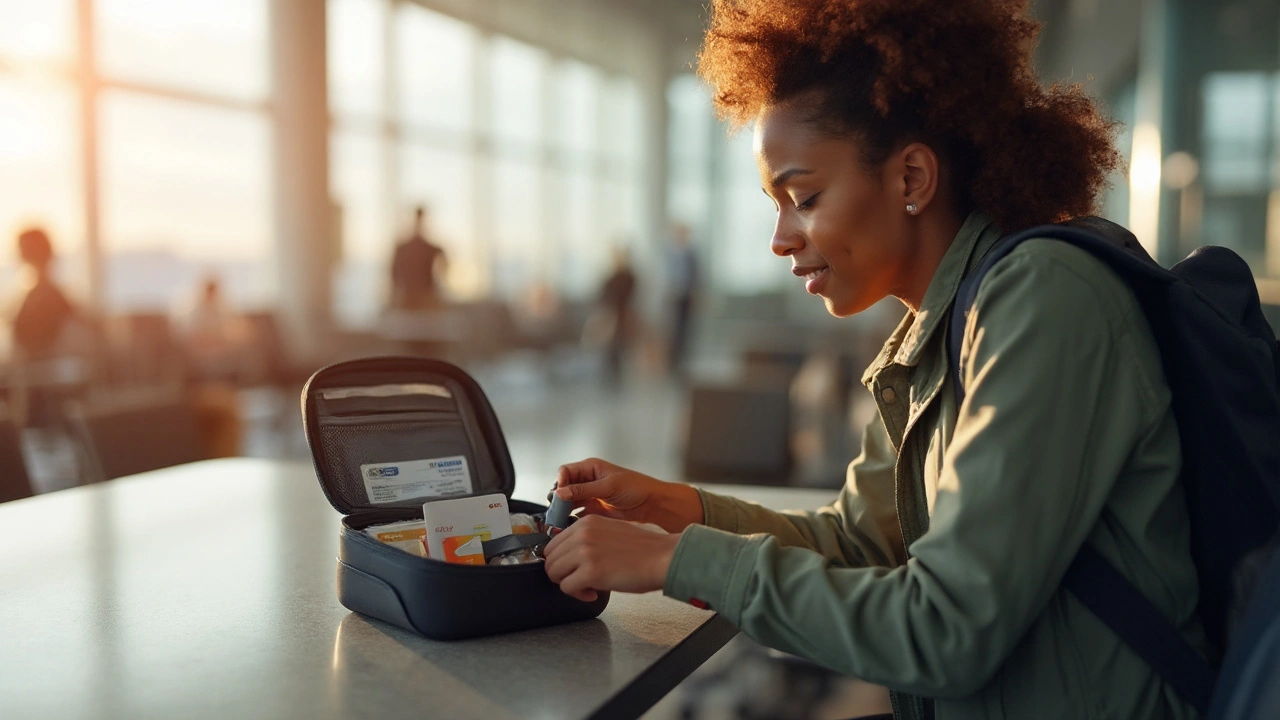Budesonide Formoterol Travel Tips: Pack, Use, and Stay Safe on the Go
If you rely on budesonide‑formoterol (often sold as Symbicort) to control asthma or COPD, a trip can feel stressful. The good news? With a few simple steps you can keep your inhaler working and avoid airport hassles.
Packing Your Inhaler the Right Way
First, always put the inhaler in your carry‑on. TSA allows rescue inhalers, but you’ll need to show the prescription label if asked. Slip the inhaler into a clear zip‑lock bag with a copy of the prescription – that way security sees it instantly.
Don’t pack it in checked luggage. Temperature swings in the cargo hold can change the spray pressure, and you could lose the device if the bag is delayed. A small pocket or the front of your backpack works best.
Using Budesonide Formoterol at Altitude
Cabin pressure drops a bit during flight, which can tighten airways. Many travelers notice a mild increase in wheezing even if their asthma is well‑controlled on the ground. Keep a rescue inhaler (like albuterol) handy and use a quick‑acting puff if you feel tightness.
For your regular budesonide‑formoterol dose, stick to your usual schedule. If you cross time zones, adjust the timing gradually – for example, move the dose 30 minutes earlier each night until you match the new local time. This avoids double‑dosing or long gaps.
Don’t skip a dose because you’re on a plane. The inhaler works the same at 30,000 feet as it does on the ground, and maintaining anti‑inflammatory coverage helps prevent flare‑ups.
What to Do If You Lose Your Inhaler
Keep a digital copy of your prescription on your phone and an extra copy in your email. If security or customs confiscates the device, you can show the paper or electronic proof to get it back quickly.
Know the local pharmacy chain at your destination. In many countries, you can get a refill with a copy of the prescription and a note from your doctor. Call ahead to confirm what documentation they need.
Emergency Plan for Travel
Write a short note with your inhaler name, dosage, and emergency contacts. Slip it into your wallet. If you ever need help, a flight attendant or airport staff can read the note and know you have a prescription inhaler.
Also, consider travel insurance that covers respiratory emergencies. Some policies reimburse the cost of a replacement inhaler if yours is lost or damaged abroad.
Finally, stay hydrated. Dry cabin air can irritate the throat, making you feel like you need more medication. A bottle of water helps keep the airways moist and reduces the urge for extra puffs.
With these easy steps – packing smart, adjusting for time zones, and having a backup plan – you can travel confident that your budesonide‑formoterol will keep working. Enjoy the journey, not the wheeze.
Traveling with Budesonide Formoterol: Essential Tips & Tricks
Learn how to safely travel with Budesonide Formoterol. Get packing advice, storage tips, paperwork tricks, and emergency plans for asthma or COPD trips.
